1. The Harm of Sitting and Working with Incorrect Posture
Sitting in the wrong position for extended periods of time can lead to various health problems. Scientific studies have shown that excessive sitting in front of a computer screen can result in vision loss, headaches, and even bone and joint damage such as back pain, shoulder pain, numbness, and loss of sensation. It can also lead to loss of appetite and skipping meals.
Furthermore, sitting in an inappropriate chair or with incorrect posture can cause muscle soreness, stress on the lower back, disc and spine damage, and accelerate aging.

2. Standard Posture When Sitting and Working with a Computer
Back Pose
Adjust the seat depth to fit your hip length and use an extra pillow behind your back if the chair has a deep seat. This helps maintain proper back posture and prevents muscle tension and back pain.

Hand Pose
Your arms should be bent at a 90-degree angle when typing. Avoid leaning in and use your whole hand to hold and move.
Correct hand posture helps prevent shoulder pain, soreness, numbness in the hands, and arthritis.
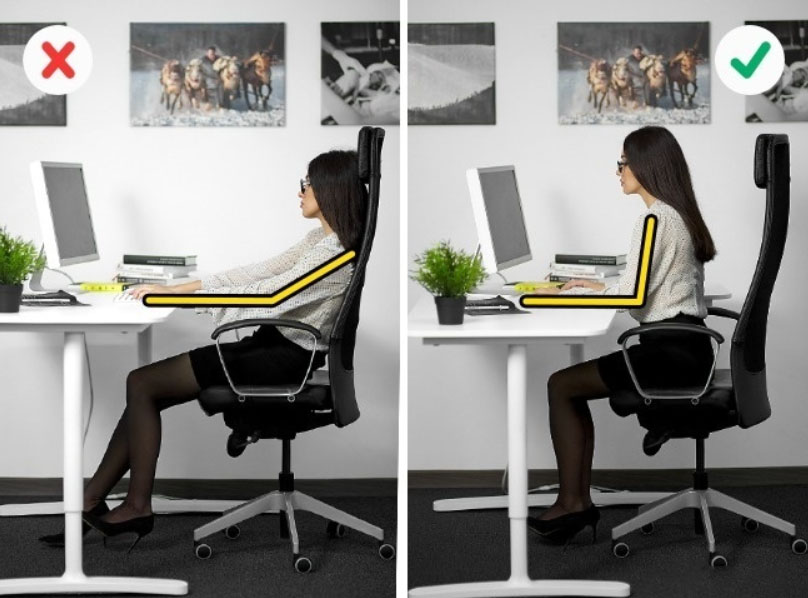
Foot Pose
Adjust the chair so that the head of the chair and the edge of the chair are not perpendicular to each other. Avoid crossing your legs or wearing high heels for extended periods as it can cause fatigue and damage to foot joints.
The best sitting position is to bend your knees at an angle slightly greater than 90 degrees. You can also use a footrest for added comfort and to maintain muscle health and prevent bone and joint diseases.
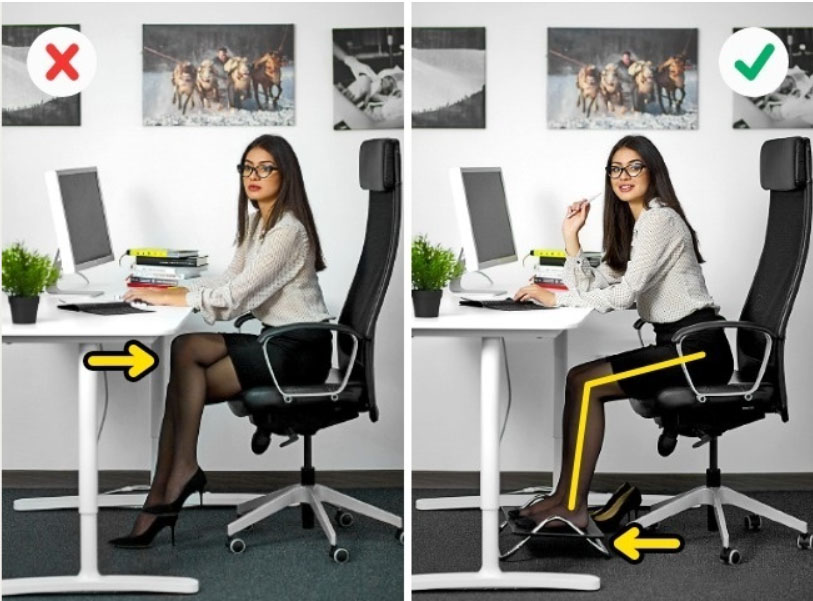
Neck Pose
Take breaks to do light exercises for your neck, such as shaking, bending, and tilting, to prevent neck stiffness and fatigue.
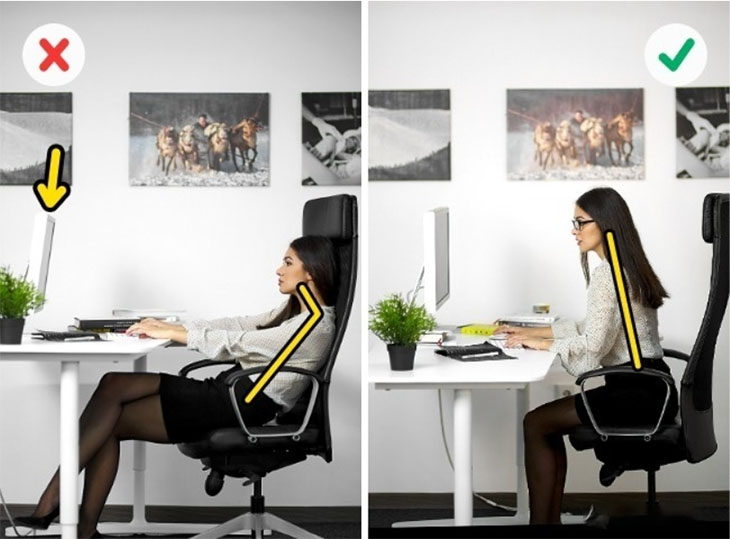
Eye Movements
Extended screen time can cause dry eyes, blurred vision, headaches, and dizziness. To mitigate these effects:
- Place the computer screen at eye level, about 50 cm away from your eyes.
- Adjust the screen brightness and text size to your comfort.
- Take breaks every 30 minutes to do eye exercises, such as walking or blinking, to relax your eyes.
- Look at natural environments with trees and greenery to give your eyes a break from the screen.

3. Effective Exercises
Regular exercise is essential for maintaining a healthy body while using the computer. Here are some exercises to consider:
Anti-fatigue exercises
Every 2 hours of continuous work, take a few minutes to do basic movements like bending your head from front to back and turning from left to right. Repeat this process 5-10 times to relax your neck, prevent aches, and promote joint health.

Exercises against shoulder and neck fatigue
Sitting and typing all day can lead to neck and shoulder fatigue. Perform relaxation exercises for the shoulders and arms to reduce fat accumulation and prevent pain. For example, sit up straight and use your hands to support your hips. Take a deep breath, pull your stomach in, stretch your shoulders forward, and then exhale slowly while bringing your shoulders back and puffing your chest out. This exercise helps prevent shoulder and neck fatigue.
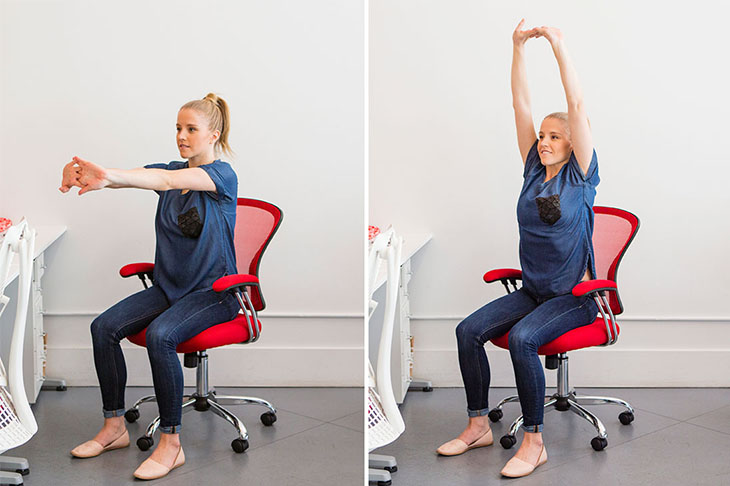
Back fatigue exercises
Sit up straight, put your hands on your thighs, and relax your neck. Hold your hands and hips, and then lean to the left. Maintain this position for a few seconds. Repeat this movement 20 times on each side. This exercise helps fight back fatigue and promotes spine and neck health.

Wrist exercises
Sit up straight in a chair with your feet flat on the floor. Use your left hand to press your right hand up and keep your arm stretched for 10 seconds. Repeat this movement 5-10 times for each hand. This exercise helps reduce tiredness in the arms and shoulders, improves blood circulation, and keeps your wrists functioning properly.
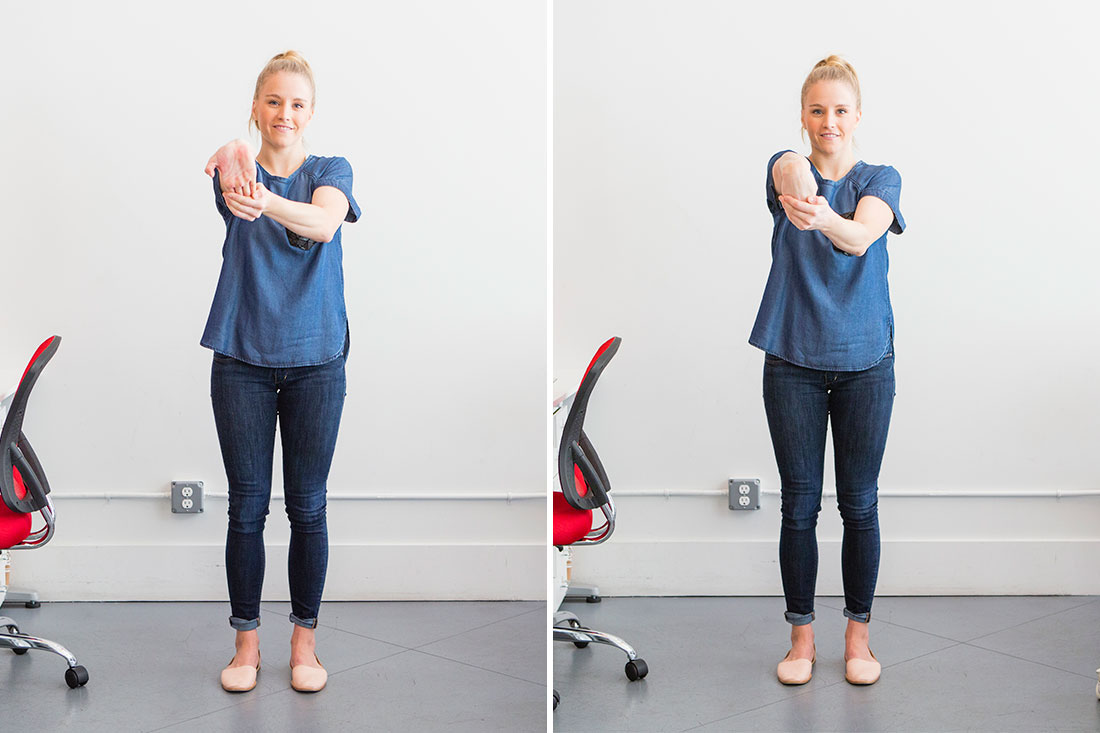
Exercises for the pelvis
Pelvic pain can cause discomfort in the lower back. Sit up straight with your hands on your knees and slightly lean to the left. Hold this position for a few seconds, feeling like you are sitting on 1/2 of your pelvis. Repeat this movement on each side. This exercise promotes pelvic health, reduces excess fat, and helps alleviate lower back joint pain.
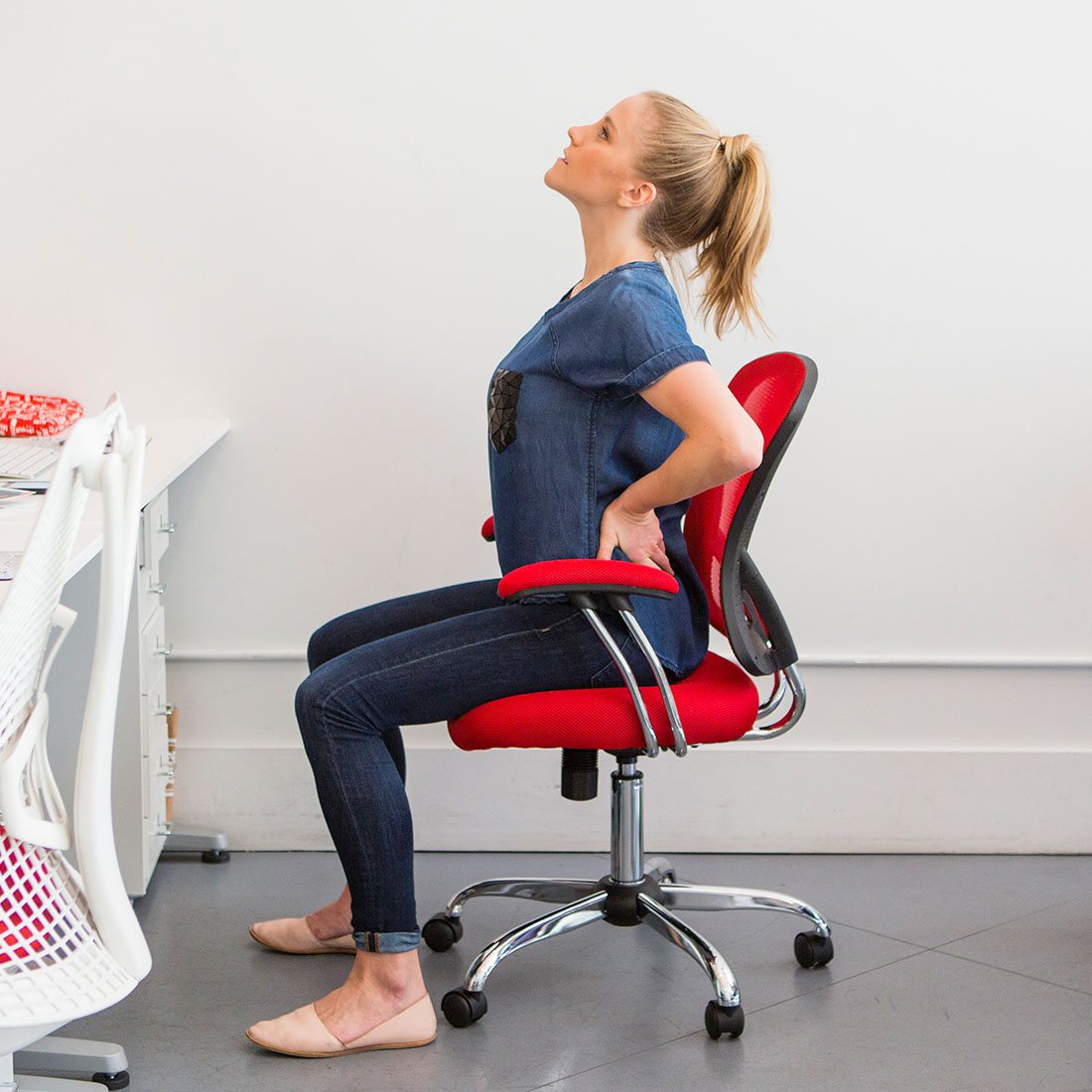
Above is a guide to maintaining the correct sitting posture while using a laptop to promote good health. If you have any further questions, please leave a comment below, and we will be happy to assist you!
Tips for Relief from Eyestrain and Dry Eyes Resulting from Prolonged Screen Use
Do you ever feel like your eyes are overworking? This is a common symptom of eye strain, which can include temporary blurred vision and dryness of the eyes. Read on with Dien May Xanh to get tips on how to cope with eyestrain and dryness in the eyes that comes with prolonged use of laptops, computers, and phones.
How to Make Sure You Buy the Perfect Mattress for Optimal Sleep and Health
Want to know the essentials of selecting a quality mattress that will give you a peaceful night’s sleep and boost your health? Look no further! This article provides all the key advice for finding a mattress that suits your specific needs and ensures you get a well-deserved rest. Get the important information you need to make the perfect mattress choice right here.







































